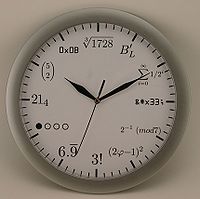Course:MATH103/Archive/2010-2011/207/Lectures/Lecture24
| Faculty of Science Department of Mathematics | |
|---|---|

| |
| Course Pages | |
| Course Policies | |
| Math Solvers | |
| Exams | |
| Quizzes | |
| Assignments | |
| Lectures | |
Lecture 24
Readings For This Lecture
- Chapter 10, pages 208 to 220
Summary
Group 5: Add a summary of the lecture in this space. Include examples, discussion, and links to external sources, if desired.
Exercises
1. The Taylor series for the function is given by
.
Find the Taylor series of by differentiating this function.
(x^2)/2 -(x^4)/(4*3!)+(x^6)/(6*5!)...
2. Find the Taylor series about of
.
Use this result to evaluate the integral
.
Verify your answer using integration by parts.
3. Find the Taylor series about of
.
4. Find the Taylor series about of
.
5. Approximate the value of using the Taylor expansion of about .
6. Evaluate the integral
using Taylor series. Find the Taylor series of .
7. Consider the exponential function . Write down a Taylor Series series expansion for this function. Divide both sides by . Now examine the terms for the quantity . Use this expansion to argue that the exponential function grows faster than any power function.
8. Find a Taylor series expansion about of
.
9. Use a Taylor series representation to find the function that satisfies the differential equation
with . This type of equation is called a non-homogeneous differential equation. Show that when your answer agrees with the known exponential solution of the equation
.





















